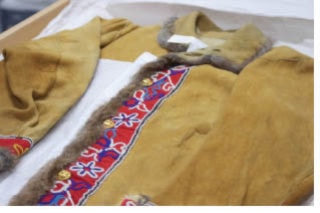The local historic site Product Development Officer Kevin Gedling is hoping to increase awareness of what Parks Canada has to offer.
Gedling works out of the Fort St. James National Historic Site and is going to be participating in a series of talks at Exploration Place in Prince George. The goal of the talks is to fulfill the historic site’s overall mandate to deliver outreach programs to regional audiences, to maintain a community presence during the winter months, and to build brand awareness of Parks Canada within the area’s largest urban market.
With Fort St. James being the local connection to Canada’s system of national parks and historic sites, Gedling feels this is a unique and positive attribute which makes Fort St.James a regional treasure which is well worth visiting.
The talks began this past Saturday, January 22, with “Treasures of the Athapaskan Collection” which described parts of a collection of over 100 artifacts from Athapaskan First Nations. Athapaskan refers to a broad linguistic group of First Nations from across a large portion of northern Canada, and includes the local Carrier peoples.
The collection was originally housed in Calgary, but was brought to Prince George in the late 1990s to be closer to where most of the pieces are from.
Gedling says ideally, the collection would be stored and some of it displayed at the Fort St. James National Historic Site, but there are currently not the necessary humidity and temperature controlled storage facilities locally.
The collection includes hunting and fishing implements, beadwork, various tools and knives, baskets and clothing, many of which were made by Carrier peoples and some by Metis who worked at the fur trading post.
The artifacts were all donated or purchased through collections and dealers throughout the north and are being presented with the permission of the local Nak’azdli Chief Fred Sam, according to Gedling.
Gedling says there are ongoing consultations with First Nations to further understand some of the artifacts and their significance.
The next talk at Exploration Place in Prince George will be “Amazing paleo finds from the mountain parks” on February 19 at 2 p.m. The talks are free.
Exploration Place gets over 100,000 visitors a year, and the talks will hopefully bring the focus more towards Fort St. James and the local historic site in the future, when the subjects will become more relevant to Fur Trading themes for which the site is commemorated. One in April will be on fur trade routes and the relationships that existed between Fort St. James and Fort George in the 1800s.
The talks are also available locally upon request, and interested persons should contact Fort St. James National Historic Site at: stjames@pc.gc.ca.
